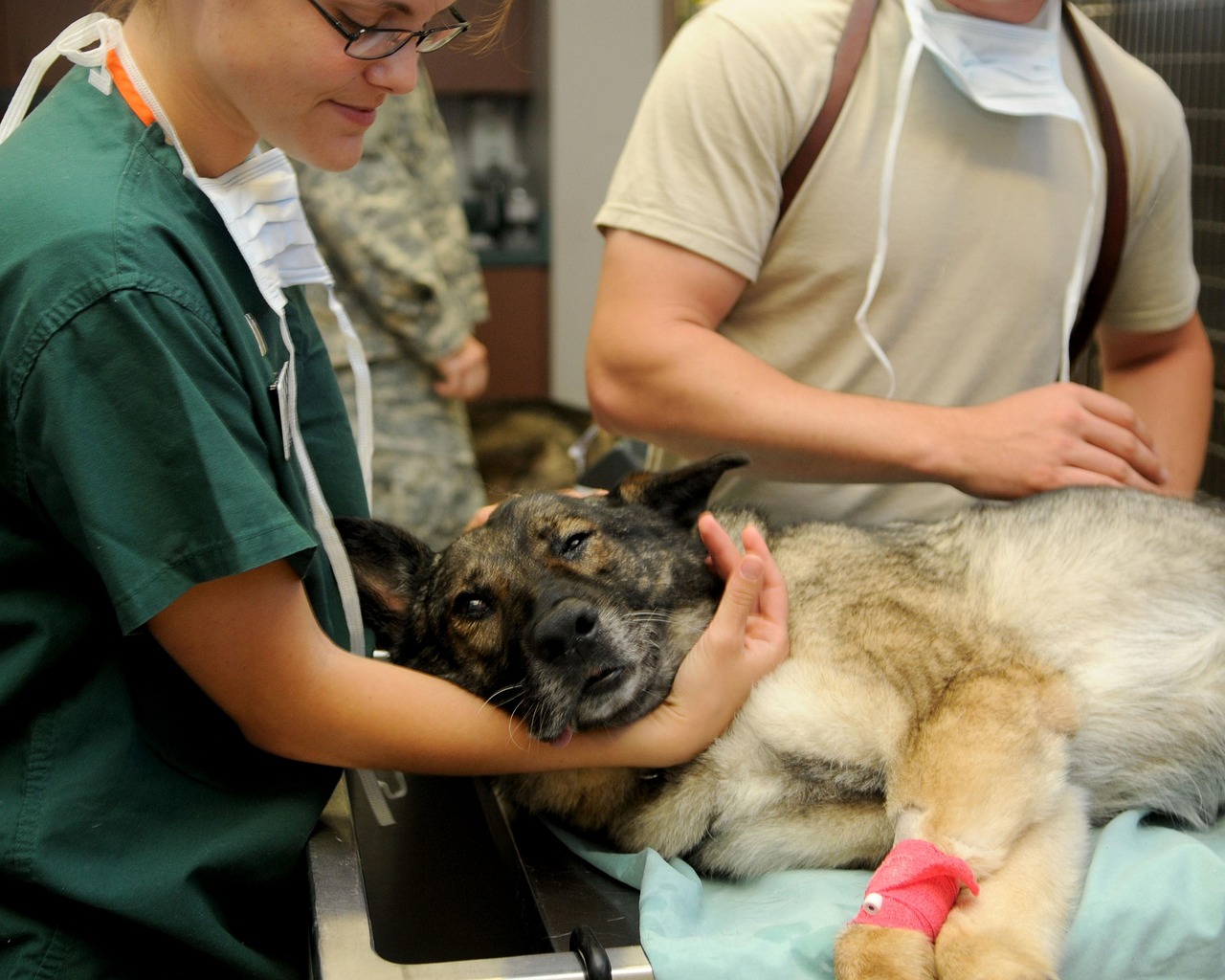You’ll hear “vet tech vs veterinarian” framed as the same job with different pay. It isn’t. The gap spans training length (about 2 years vs 7–9), legal authority (who diagnoses, prescribes, and operates), and financial risk (median tech salaries around the low $40,000s vs veterinarians around the low six figures in the U.S., with very different debt loads).
If you’re deciding which path fits you, start with scope and time-to-licensure. Vet techs are licensed medical support clinicians with hands-on patient care; veterinarians have ultimate medical and legal responsibility. The sections below lay out the mechanisms, trade-offs, and realistic outcomes so you can choose with clear expectations.
Training, Licensing, And Debt
Vet techs typically complete a 2-year AVMA-accredited associate program (some pursue a 4‑year bachelor’s as veterinary technologists). After graduation, candidates pass the VTNE, then obtain state credentials (titles vary by state: LVT, RVT, or CVT). Many states require continuing education (often 10–20 hours per year). The pipeline from first semester to paid work can be under three years for a focused student.
Veterinarians complete extensive prerequisites (commonly a full bachelor’s heavy in biology, chemistry, and physics) and a 4‑year Doctor of Veterinary Medicine degree. Licensure requires passing the NAVLE plus state-specific requirements (e.g., jurisprudence exams). A DEA registration is needed to prescribe controlled substances. New graduates may enter practice directly; those seeking specialty certification add a 1‑year internship and a 3–4‑year residency, followed by board exams.
The economic profiles diverge early. Tech programs are shorter and generally far less expensive than veterinary school; total tuition for an associate’s degree is commonly a fraction of one year of DVM tuition. For veterinarians, median debt among indebted graduates often lands in the $150,000–$250,000 range, though the distribution is wide and depends on residency status and scholarships. A useful rule of thumb: time to licensure is roughly one-third for techs, while expected early-career pay for veterinarians is roughly 2–3× higher but paired with substantially higher debt. If you aim to minimize borrowing and enter the field quickly, the tech route is structurally aligned with that goal.
Scope Of Practice And Daily Work
Regulation not preference draws the boundary lines. Vet techs cannot diagnose, prognose, prescribe, or perform surgery. They practice under a veterinarian’s supervision, which state law defines at levels such as immediate (vet in the room), direct (on premises), and indirect (available by phone). Within those bounds, credentialed techs execute a wide clinical range: triage, phlebotomy, IV catheterization, anesthesia monitoring and often induction (rules vary by state), radiography, sample processing, dental prophylaxis, nursing care, client education, and medical record documentation.
Veterinarians own the medical decision-making. They take histories to synthesize a problem list, order and interpret diagnostics, make differential diagnoses, prescribe medications (including controlled substances), design anesthesia plans, perform surgery and dental extractions, and determine prognosis. They also establish the veterinarian–client–patient relationship (VCPR), which legally anchors treatment and any telemedicine advice. In practical terms, a case moves when the veterinarian makes a call and it flows efficiently when a trained tech team executes that plan.
Consider a same-day vomiting case in small-animal practice. A tech obtains a targeted history, vital signs, and blood draw; takes abdominal radiographs; places an IV catheter; and runs in-house labs. The veterinarian interprets results, differentiating dietary indiscretion from obstruction or pancreatitis, authorizes antiemetics and fluids, and discusses surgery if indicated. In emergency settings, a tech may triage the patient, start oxygen, place the catheter, and begin monitoring under standing orders while the veterinarian stabilizes and decides on imaging or surgery. For large animal work, the tech handles restraint, field anesthesia support, and sample collection; the veterinarian performs the block, laceration repair, dystocia management, or herd health decisions.
Compensation, Hours, And Risk
Pay reflects scope and liability. In recent U.S. data, median earnings for veterinary technologists and technicians cluster around the low $40,000s, with higher compensation for overnight emergency, referral centers, or metropolitan markets. Veterinarians’ median salaries typically land in the low six figures, with wide variance: emergency and specialty roles pay more; rural mixed practice may pay less initially but offer faster case autonomy or ownership opportunities. Benefits (health insurance, CE stipends, licensing fees) are common for both roles in full-time employment, but retirement matching and bonuses are generally larger for veterinarians.
Schedules diverge with practice type. General practice often runs daytime hours plus some evenings and rotating weekends. Emergency and critical care use 10–12‑hour shifts, nights, and holidays. Large animal and rural mixed practices add on-call rotations for calvings, colics, and farm calls; veterinarians bear legal responsibility for after-hours decisions. Techs may see steadier hourly structures with overtime eligibility, while veterinarians more commonly have straight salary or production-based pay tied to revenue, which can mean income swings across seasons. Burnout and compassion fatigue affect both roles; surveys consistently flag euthanasia frequency, client financial constraints, and workload as key stressors. Tech turnover is notably high in many regions, often within 5–10 years, driven by pay ceilings and physical demands.
Both paths carry occupational risks. Bites, scratches, and needlesticks are routine hazards. Radiography adds ionizing radiation exposure without proper shielding. Anesthetic gases and sterilants require scavenging and ventilation. Zoonoses such as ringworm, leptospirosis, and salmonellosis are controlled with PPE and protocols but never fully eliminated. Heavy lifting and awkward restraint lead to musculoskeletal injuries. Practices with strong safety culture (bite-scale training, chemical scavenging checks, lift limits, and team debriefs after incidents) materially reduce these risks and improve retention.
Career Paths And Long-Term Fit
For techs, advancement can be clinical, managerial, or industry-facing. Clinically, the Veterinary Technician Specialist (VTS) credential recognizes advanced expertise (e.g., emergency and critical care, anesthesia and analgesia, internal medicine, dentistry, behavior). Specialty certification usually requires documented case logs, advanced CE, and an exam. Compensation increases vary by market but often run 10–30% over generalist tech roles, with greater autonomy in anesthesia, ICU, or dentistry. Outside the clinic, techs move into practice management, education, laboratory animal care (AALAS credentials: ALAT/LAT/LATg), or medical sales and technical support.
For veterinarians, trajectories include medical director and practice ownership (capturing business profit in addition to salary), specialization (board certification in surgery, internal medicine, emergency/critical care, oncology, etc.), academia, public health, and industry. Specialization requires several additional years but typically raises compensation and concentrates the caseload. Industry roles (regulatory affairs, pharmacovigilance, R&D, pet nutrition) leverage medical training with lower after-hours burden. Ownership introduces business risk and reward: income volatility, payroll and inventory management, and long-term equity value.
Team design influences satisfaction for both roles. Efficient practices run veterinarian-to-tech ratios around 1:3 to 1:5, allowing vets to spend time on diagnosis and client communication while techs handle technical skills. Too few techs push vets into tasks below license; too many without delegation protocols underutilize tech skill. When interviewing, ask for the typical daily caseload (appointments per DVM), tech duties allowed under supervision, and who induces anesthesia answers reveal how each license is used.
FAQ
Q: Is being a vet tech a good stepping stone to becoming a veterinarian?
Yes for exposure, not for shortening school. Tech experience builds clinical intuition, but veterinary schools still require standard prerequisites and the full DVM curriculum. The advantage is informed commitment: you’ll know clinic rhythms, stressors, and whether decision authority appeals to you.
Q: Can vet techs perform dental extractions or induce anesthesia?
Rules vary by state. In many states, credentialed techs can induce and monitor anesthesia under a veterinarian’s supervision; others restrict induction. Simple dental extractions may or may not be permissible for techs depending on local law and supervision level. Always check your state practice act and hospital policy.
Q: Do veterinarians always come out ahead financially after debt?
Not automatically. Veterinarian income is higher, but large debt and interest can compress take-home pay in early years. Income-based repayment and employer benefits help. Over a 20–30‑year horizon, most veterinarians out-earn techs cumulatively, but the breakeven year depends on tuition, starting salary, specialty, and cost of living.
Q: Which role fits if I want maximum animal contact versus decision-making?
Choose tech for continuous hands-on care restraint, nursing, anesthesia monitoring, and inpatient work dominate your day. Choose veterinarian if you want final responsibility: diagnosing, prescribing, surgery, explaining trade-offs to owners, and bearing legal accountability for outcomes.
Conclusion
If you want to enter the field within three years, enjoy technical procedures, and prefer stable hourly work, vet tech is a practical, high-impact choice. If you want authority to diagnose and operate, are comfortable with longer training and higher debt, and like directing teams, target the DVM. To decide, shadow both roles for several full shifts, ask about supervision levels and DVM-to-tech ratios, and map your local tuition and salary ranges; then choose the path whose daily tasks and economic profile you can sustain for a decade.

